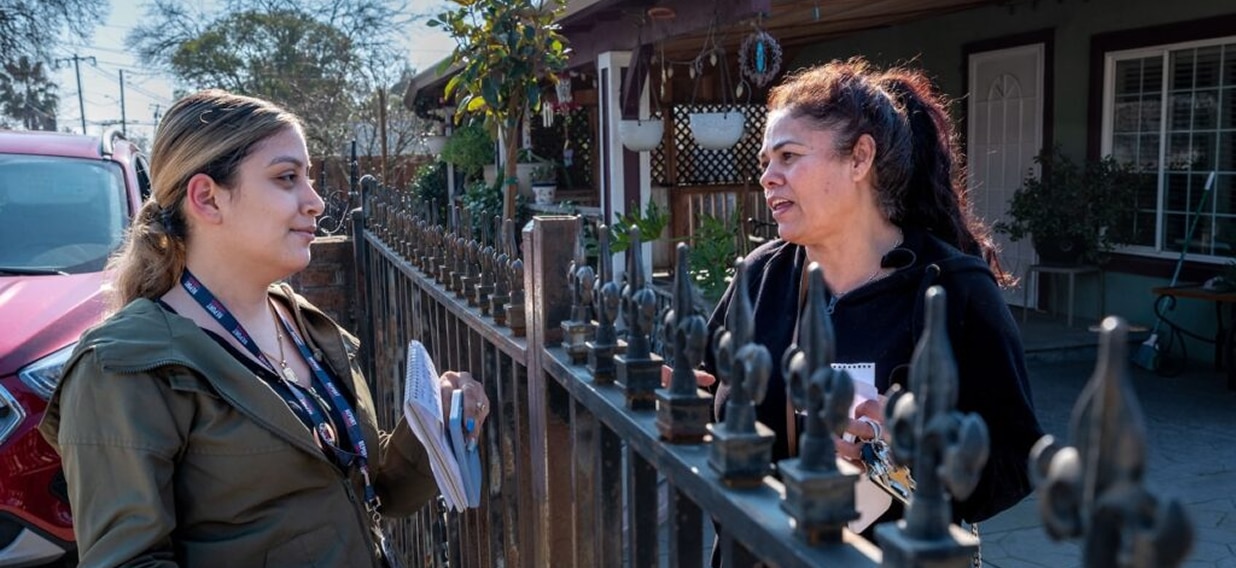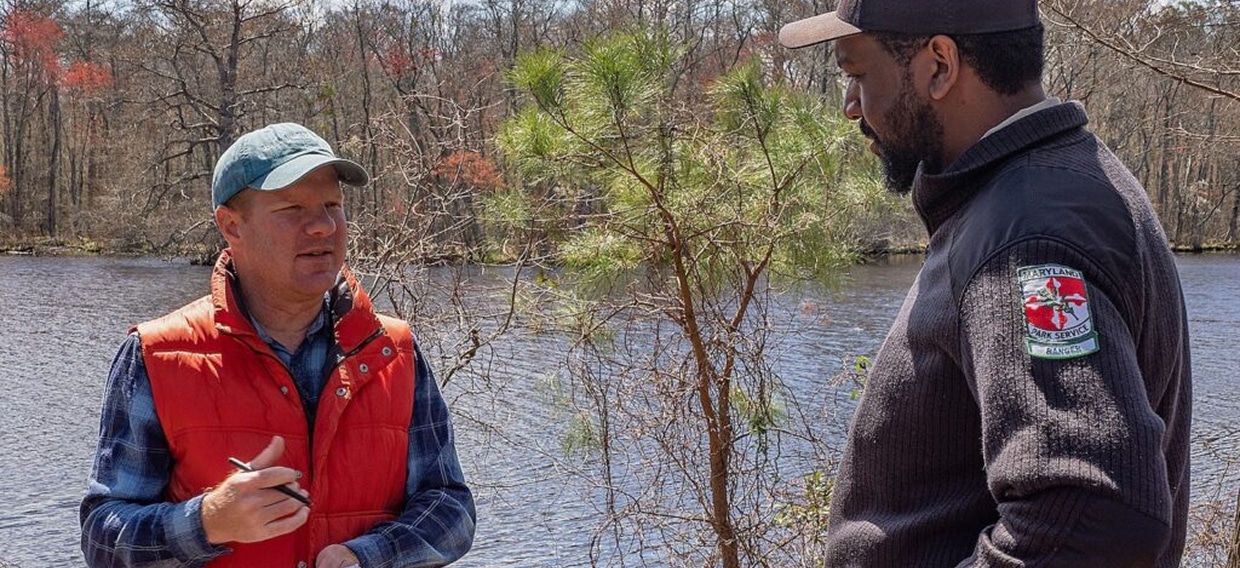Bridge Michigan has been covering policy and politics statewide since 2011. The year 2024 brought intense audience volatility for Bridge. Like many digital news platforms, site visits cratered. Bridge lost 59% of its traffic from Google in the months after the search engine introduced AI overviews. Social media continued to decline, with monthly Facebook referrals falling to 15,000, down from 81,000 in 2019. Bridge worried that revenue would soon follow.
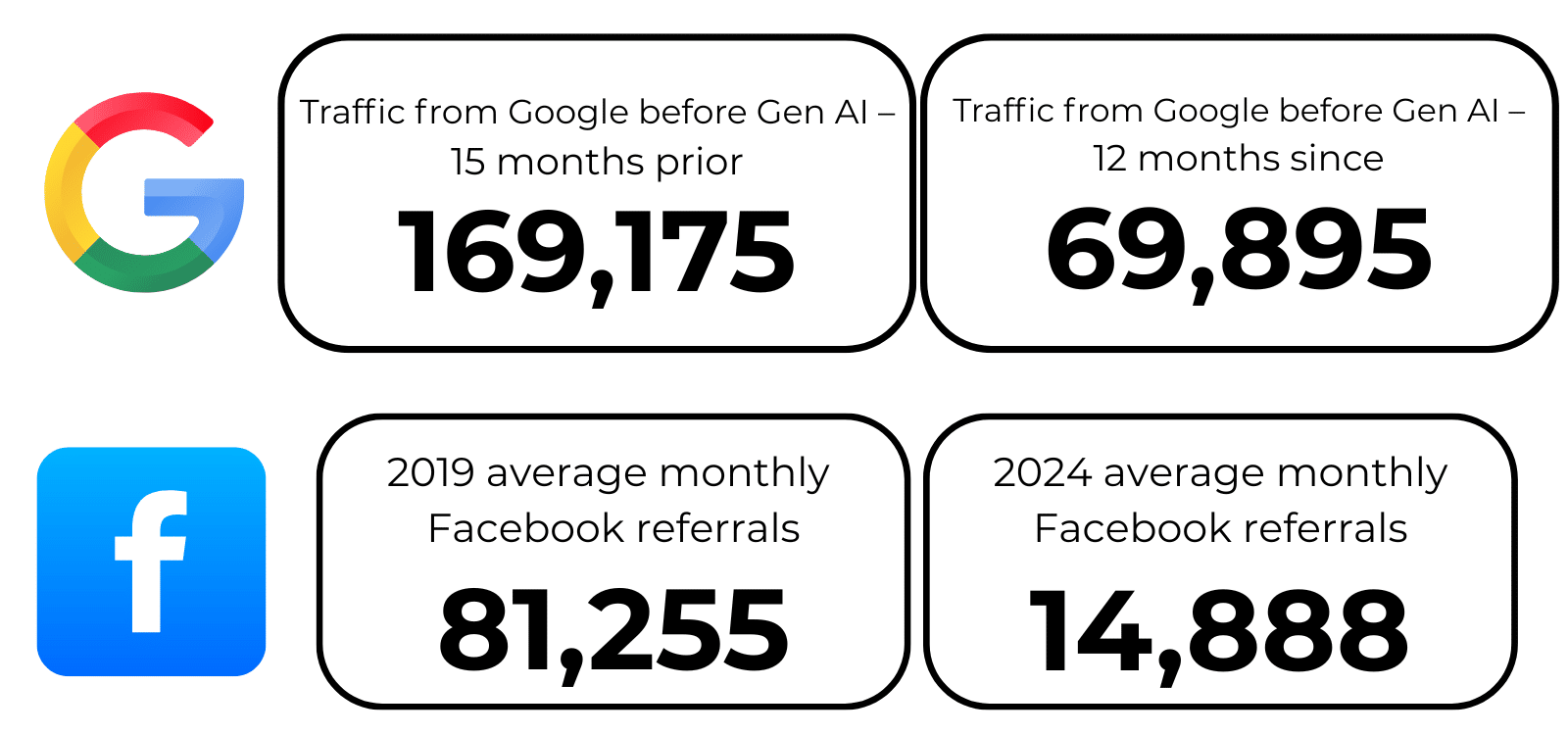
But it has not. Fast forward a year, and Bridge has seen record increases in reader revenue in April through July of 2025. This allowed them to hire four new reporters and expand coverage in Northern and Western Michigan.
Though things looked bleak in 2024, Bridge was actually much closer to a successful audience strategy than the staff realized. Collapsing referral traffic would push the outlet to pivot to the strategy that has sustained its current growth: pursuing owned audience through newsletters.
Bridge’s success hinged on three key factors:
- A robust system for embedding audience data into the editorial process.
- An audience team that took responsibility for equipping reporters for major transitions.
- An editorial team that responded to volatility with experimentation.
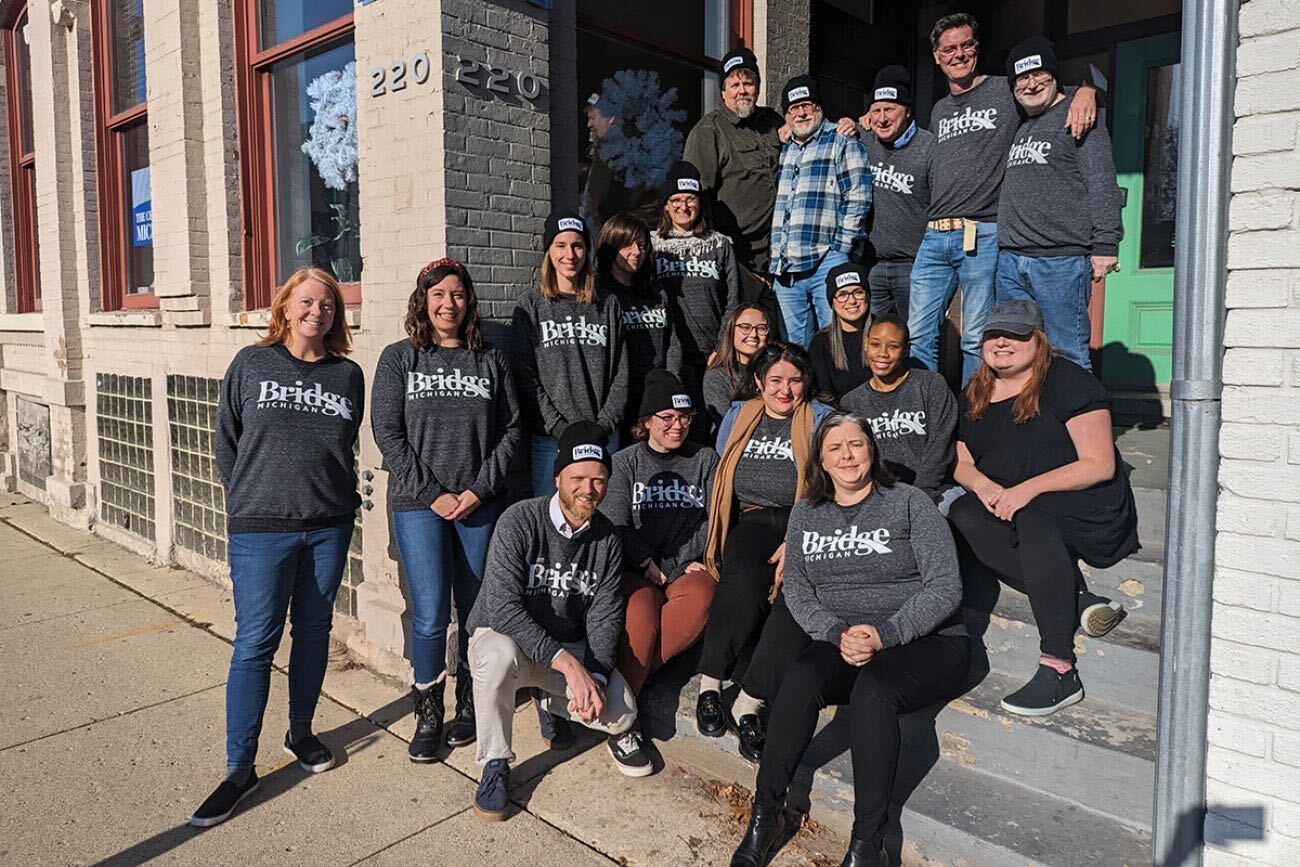
As web and social media traffic erode, models of newsroom resilience and adaptation are vital. The conventional playbook for digital news (exclusively text-based, optimized for page views and dependent on algorithmic platforms to mediate their connection with audience) is not working. Leaders looking for a way forward are often forced to ask their workplace not just to change but to adopt a posture of constant adaptation. That requires implementing new systems, navigating newsroom politics and defining a clear vision amidst constant flux. The Bridge Michigan story is meant to give nonprofit newsrooms and their supporters a model for how one outlet confronted these challenges.
Data from the ground up
Bridge’s mission is to provide “all corners of Michigan” with free, fact-driven, digital journalism. Bill Emkow was hired at Bridge in 2018 as growth strategy director. He came with 28 years of experience helping Michigan news organizations reach broader audiences.
Emkow’s mandate is significant in an era of declining referral traffic: expand the impact and reach of Bridge’s reporting and unlock new potential donors in the process. It is a growing need at an organization where 26% percent of revenue comes from donations less than $1,000.
Audience data is essential to this work. When Emkow was new to Bridge, he didn’t have the historical context to understand Bridge’s audience performance. So, the first thing he did was start building a spreadsheet.
“I just spent my first few weeks at Bridge going through months and months of Universal Analytics [forerunner to Google Analytics] and writing down the first page of each report in a horizontal line,” Emkow said.
Little did he know his spreadsheet would become the foundation for Bridge’s audience strategy.
Hand-copying month-over-month user statistics was tedious. However, it gave Emkow an understanding of Bridge’s audience strengths and weaknesses. Emkow learned to recognize the signals of a low-performance month before relying on outside software to highlight those patterns.
Another advantage of Emkow’s system was that by starting from scratch, he could tailor his system around Bridge’s needs and tweak it to scale with him as he got more sophisticated. Eventually, Emkow integrated tracking IDs from the CRM platform Salesforce to understand where member donations were coming from. He used Facebook lead-generation data to map the audience funnel toward Bridge membership. He also worked with Glueletter, a newsletter analytics software, to build out a custom subscriber rating system. All of this information was captured in that original spreadsheet, unironically titled, “Bill’s favorite spreadsheet (2018.)” It now serves as a seven-year compendium of Bridge’s performance and of Emkow’s unrelenting experiments and attempts to understand the Bridge audience.
Bridge’s work to strengthen its audience data led to noticing previously unseen patterns. In the post-pandemic traffic comedown, from 2020 to 2021, Bridge Michigan saw a massive fall in annual web users. Yet reader revenue actually increased in 2021. This corresponded with a rise in newsletter subscriptions and challenged the idea that Bridge’s main value-source to audiences was its website. Survey and anecdotal data from readers showed more people engaging with Bridge in their inbox than their browser. Emkow realized that 80% of reader donations were originating from their newsletter. In recent years, that number has grown closer to 95%.
Bridge’s data would confirm a trend happening across nonprofit news: the necessity of prioritizing owned audience platforms. A strategy optimized for page views no longer aligned with audience habits. Furthermore, relying on social and search referrals impeded Bridge’s understanding of its users, because audience relationship was filtered through the blackbox of the platform algorithms.
“It was a big lesson when I got to Bridge that the algorithm can just get yanked out from underneath you and you could do nothing wrong, but all your referrals change for you,” Emkow said. In addition to meeting the core audience where they are, newsletters have allowed Bridge to more fully understand audience experience.
The level of statistical insight that Bridge gained is a huge achievement. INN Index data shows that the nonprofit news sector’s “ability to understand audience behavior is significantly underdeveloped,” with a third of newsrooms not tracking direct audience and only a quarter tracking reader conversions. Amidst massive shifts in audience habits and the digital distribution landscape for news, many newsrooms simply lack data on what their audience needs.
In building out Bridge’s audience analytics, Emkow did not start with the most sophisticated tools, he started with what was intelligible to him, with tools he could own. He took a long-view both in terms of the conclusions he drew from the data and in terms of his team’s capacity to develop facility with the data.
The next stage in Emkow’s work is ongoing and maybe the most important: embedding data into the editorial process, so that Bridge’s journalism is more responsive to its audience.
Audience-editorial partnership
Even when robust audience data exists within a nonprofit newsroom, using that data to drive change can be challenging. Editorial work and audience work can be siloed off from one another. Nonprofit newsrooms are often structured to insulate reporters from traffic ups and downs, reluctant to let audience or revenue data have any impact on editorial decisions. Given the volatility of the industry, many reporters are suspicious of these metrics — associating them with layoffs and cost-cutting.
Integrating audience data into editorial workflows requires empowered audience staff who are trusted, who understand audience data in terms of mission and editorial goals, and who take shared responsibility for reporters’ success.
For example, Emkow is in newsroom leadership and empowered in editorial meetings. According to Regional Editor Justin Hinkley, “Having someone who is focused on using that data to make those connections is important because it would be one of those things that would fall by the wayside if it was left to editors to do.”
Emkow also has enough of an editorial background to ground analytics in the newsroom mission. This helps him align his goals with editorial objectives and ensures he has the trust of Bridge’s journalists.
“He has an editing background. He has a news background. And I think that helps people to trust him that he’s not gonna just say, ‘We should do this for clicks,’” education reporter Isabel Lohman said.
Reporters have also bought in because the shift to newsletters doubles down on a commitment to public service journalism by expanding the audience for Bridge’s reporting.
Before starting two original newsletters focused on Northern and Western Michigan, Hinkley conducted close to 70 calls and meetings with stakeholders and readers. Local news has struggled across rural Michigan, but he was surprised to learn, “people are interested in local news, they just don’t think they have it.” Hinkley’s newsletters aggregate Bridge Michigan stories, but also the best regional reporting from other outlets. “People just don’t know how to find some of the news that’s still out there, they’re really responding to me bringing it to them in one easy-to-find place.” As a trusted and known voice, Hinkley’s newsletter solves a local news discovery problem for readers while strengthening the local ecosystem in the process.
Additionally, in shifting away from an SEO-based strategy and honing its understanding of the value subscribers got from the newsletter, Bridge has started to cultivate community around its reporting. Optimizing for SEO primarily involves publishing more stories with trending keywords. Reporting via newsletter is about developing consistent trust and rapport to build audience routines around your journalism.
in reader revenue from
2020-2024
engaged subscribers* from
2020-2024
Rather than focusing on click rates or open rates, Bridge worked with Glueletter to develop their metric for an engaged subscriber. An engaged subscriber basically translates to a reader who opens a Bridge newsletter at least once a week. While Bridge resists catch-all metrics, engaged subscribers became the core KPI. This conception of audience value is reflected in revenue data: As Bridge’s engaged subscribers grew by 46% in the last 4 years, reader revenue grew by 44%.
Because Bridge is dependent on reader revenue as much as philanthropy or major donors, it aligns revenue strategy with the journalism that will provide the most value for the most engaged audience.
Research is proving the viability of this approach across the industry. Reader habit predicts subscriber churn, according to Larry DeGaris, Executive Director of the Spiegel Research Center at Northwestern University who has analyzed audience behavior with more than a hundred local news organizations.
“No matter what else we added to the model, the results were the same: Reader regularity is the North Star,” said DeGaris. “We also found that social connection is the strongest predictor of reader habit. So, newsrooms should take care to not only connect with their readers but facilitate ways for readers to connect with each other.”
Finally, the Bridge growth team has taken responsibility for equipping reporters with what they need to succeed in a new format. Emkow has designed a newsletter curriculum for reporters, which reiterates the message, “You are not alone.” Bridge has positioned the entire development and growth teams to support reporters in the transition. They also aim to give reporters broad autonomy to pursue a newsletter voice that feels genuine to the reporter. The data is not meant to tell reporters what to cover, but rather to demonstrate what formats of reporting are landing with their audience.
“Bill tries to create a range of options. You can start with a little or you can go big or you can go anywhere in between and he’s going to help you,” Lohman said. By partnering with the editorial team and taking responsibility for equipping reporters to succeed, Emkow has made the transition a lot smoother.
“I hated audience metrics, I felt like it was getting away from the journalism mission and the change mission… But Bill is really good at showing the connection between a well-done newsletter and engagement, engagement and revenue and revenue and impact.”
Justin Hinkley, Regional Editor, Bridge Michigan
“I hated audience metrics, I felt like it was getting away from the journalism mission and the change mission,” said Hinkley, the regional editor. “But Bill is really good at showing the connection between a well-done newsletter and engagement, engagement and revenue and revenue and impact. He has a talent for making things crystal clear.”
This level of change management was a lot of work for an audience team that already had a full slate of responsibilities. It required a deft balance between sensitivity to traditional editorial constraints while remaining firm in the direction of change.
“It requires the person who signs the checks, the leader, to empower someone to institute a cultural change that is encouraging, positive and filled with data — and it requires being a therapist sometimes,” said Emkow.
Meeting volatility with experimentation
Another key element of Bridge’s success has been the way the team responded to uncertainty with openness to iteration and trying new things.
Without reporters and editors who were willing to join Emkow out on the limb, newsletters were never going to develop. When Isabel Lohman arrived at Bridge in 2022, the Education Watch newsletter was just an RSS feed—a collection of links to stories sent out every other week. Without any previous newsletter experience before Bridge, Lohman has significantly grown the list size, the number and ratio of engaged subscribers and recently expanded to publishing twice a week.
Rather than committing to a single strategy, Lohman has embraced constantly tweaking and experimenting. Lohman felt secure in taking these risks because Bridge leadership presented iteration as part of the culture of the newsroom when she joined.
“Editors have fully embraced all this experimentation in their daily newsletter, which is the one that has the most readership,” Lohman said. “I think that’s huge. If our daily newsletter looked the same as it did three years ago and they were telling me to do all these new things, I would be really confused.”
Through experimentation, Lohman and Emkow have validated industry-wide best practices and incorporated them across the newsroom. They’ve learned to open their newsletters with chunky talkers and then sell their enterprise reporting lower down with compelling graphics and photos. They also learned to beta test to segmented audiences and regularly solicit subscriber feedback via surveys.
Finally, they have established the importance of marketing.
“The reality is almost all our growth comes from paid acquisition.”
Bill Emkow, Growth Strategist, Bridge Michigan
“When I first started out in this work, I thought that our lists grew from word of mouth,” Emkow said. “The reality is almost all our growth comes from paid acquisition.”
Bridge uses Social News Desk to run paid social media ads, primarily on Facebook, to expose their newsletters to new audiences. In A/B testing not only different ads, but different subscriber journeys after a user clicks on an ad (landing pages, welcome series, etc.), they have been able to maximize conversion. In 2024, Bridge added 34,157 subscribers with an average cost per lead of $2.03/lead.
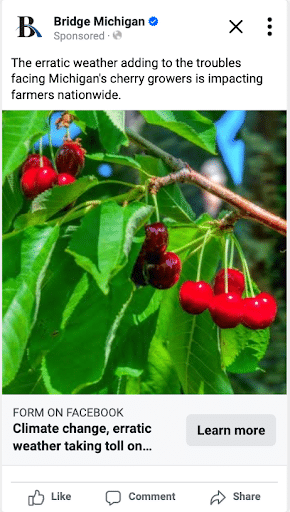
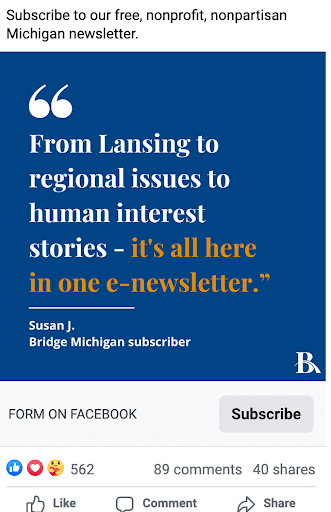
Bridge has learned that marketing is about more than growing the list. Much of how a subscriber engages with the newsletter “depends on how they’re introduced to it,” via the initial advertising and welcome series, Emkow explained. Going forward, Bridge plans to shift marketing away from growing lists at the lowest possible cost and towards growing the amount of potential engaged subscribers.
Executive Editor Joel Kurth has more than 30 years of investigative experience in Michigan and has earned more than 50 state and national reporting awards. He still has a full slate of reporting and editing duties, but a year and a half ago he took on a new project: designing a weekly news quiz. Though a departure from Kurth’s hard-hitting investigative work, the quiz has been an unexpectedly significant source of engagement and even revenue. It also represents the journalistic ethos that has been key to both Kurth and Bridge’s resilience in the field.
“The joy of journalism is doing different things every day, learning different things every day. Trying to figure out a way to make a really engaging newsletter does fulfill that.” Kurth said. “And I wouldn’t be surprised if in three years we’re trying something new and that’s fun too.”
Tools Bridge uses that your newsroom can too
Bridge’s work to reorient around newsletters is ongoing. To the Bridge team, it does not feel like they have won anything. The work feels just as hard and scrappy as ever. But this is the nature of organizational progress in the nonprofit news field. Bridge has taken clear steps to gather audience data and embed it in editorial workflows, to establish team-wide buy-in across audience and editorial priorities, and to meet uncertainty with experimentation. The results: stronger engagement, more sustainable reader revenue, and more Michigan residents exposed to Bridge’s journalism.
What are some of the tools your newsroom can use to help you replicate the progress Bridge has made on newsletters?
- If you’re starting out (at the DIY-level), Emkow suggests familiarizing yourself with Meta Ads manager and Zapier. Additionally, he shared nine metrics (see image below) that he would pay attention to if he was aiming to isolate the simplest most impactful analytics.
- If you’re looking for the best paid software tools, Emkow recommends Optin Monster for managing CTAs and SparkLoop, an in-email referral system. GlueLetter has also been a really important tool for newsletter analytics.
- Finally, if you’re looking for marketing and membership help, Bridge uses Social News Desk to manage lead-gen and News Revenue Hub to grow their membership program.
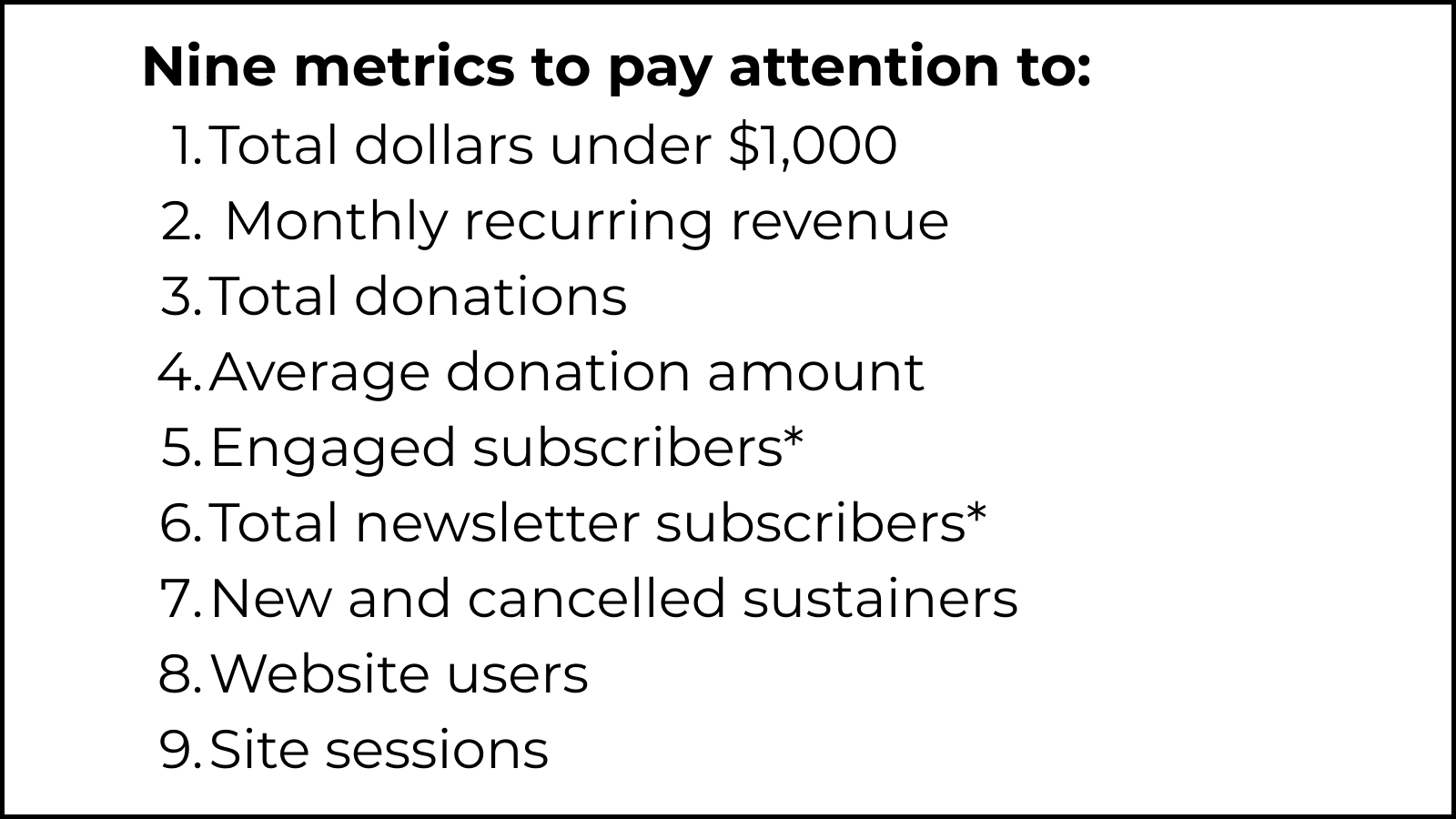
Existential threats to nonprofit news are overwhelming and exhausting for anyone working at an outlet. So many newsroom leaders feel like they’re locked into battle stations. But on top of funding shortages, changing audience habits, and distribution volatility, the field faces the compounding risk that newsrooms and their supporters will allow the anxiety of this moment to stop them from taking the risks we all know public service journalism needs to thrive into the future. Bridge Michigan was able to create space for long-term planning, for experimentation and innovation, and even for fun and joy at trying new things. Bridge’s response was not ignorant to the challenges. Rather, the team recognized that risk and experimentation were required to sustain their reporting.





